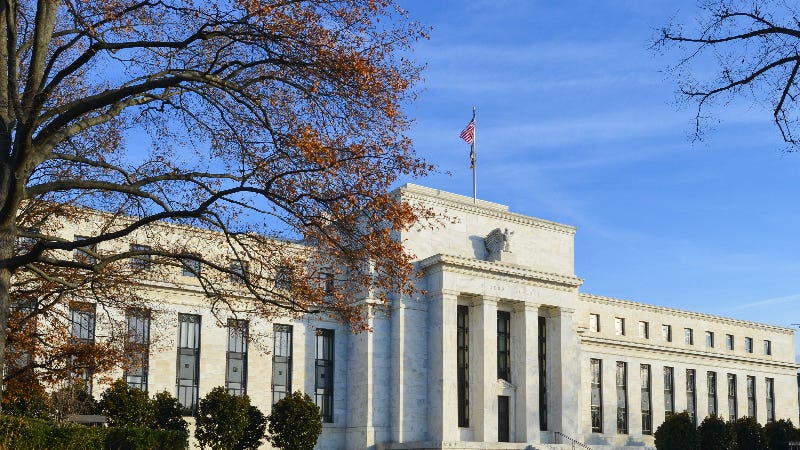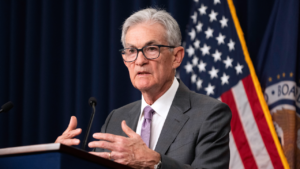How the Fed’s second emergency rate decision impacts your credit card balances

The Federal Reserve announced Sunday its move to cut interest rates by a full percentage point to near-zero. This marks its second emergency rate decision this year in response to coronavirus, and will affect credit cardholders whose interest rates are tied to the Fed’s decision.
Credit card interest rates are based on the Fed’s prime rate plus a margin set by credit card issuers. But while this move will likely lower the interest revolving credit users accrue on their balances, it may not have a significant impact for many borrowers.
“The coronavirus outbreak has harmed communities and disrupted economic activity in many countries, including the United States,” the Federal Open Market Committee (FOMC) said in a statement accompanying the move. “Global financial conditions have also been significantly affected.”
The statement continued, “The Committee expects to maintain this target range until it is confident that the economy has weathered recent events and is on track to achieve its maximum employment and price stability goals.”
Credit card interest rates currently hover above 17 percent, much higher than many other forms of consumer debt, which means paying down balances should remain a priority. As coronavirus outbreak fears continue to spread globally, cause market volatility for investors and uncertainty among consumers, now is the time to eliminate your high-interest debt.
Economic impact of coronavirus
Like its decision earlier this month, the catalyst for the Fed’s emergency rate cut is the growing global threat of coronavirus to both public health and the economy.
“At issue is how much this inoculation [from the Fed] can protect the economy and support the financial markets from a public health crisis and supply constraints radiating out from China,” Mark Hamrick, senior economic analyst at Bankrate, said following the Fed’s first emergency decision in early March.
“Lower interest rates do little to make consumers and businesses feel substantially more confident about the future when a health crisis is spreading around the world,” he continued. “It also cannot address the hobbled supply chains, including manufacturing capability in China and South Korea. Still, the Fed is doing what it can to try to keep the economy out of recession.”
Credit card businesses are especially sensitive to changes in consumer spending, says Ted Rossman, industry analyst at Bankrate. Visa and Mastercard, two of the most ubiquitous card networks, have already cut revenue outlooks.
“Current worries center around health issues and the extent to which they impact people and economies,” Rossman says. “If people aren’t traveling or going out to eat, that’s because they’re afraid they’re going to get sick, not because the fed funds rate was too high.”
How credit cardholders may be affected
Cardholders may likely see a cut to their interest rates due to the Fed’s decision, but it won’t be enough to make a significant difference in debt balances.
“Reducing interest rates to borrowers will ease the burden of existing debts slightly but is unlikely to spur the usual surge of borrowing as consumers and businesses batten down the hatches for a coming drop off in U.S. economic activity,” says Greg McBride, CFA, chief financial analyst at Bankrate.
“Now that we’ve had 150 basis points of emergency cuts, we’ll probably see a national average credit card rate around 16 percent within the next month or two, down from about 17.5 percent in late February,” Rossman says. “Of course, that’s still a hefty rate — way higher than most mortgages, student loans and auto loans.”
For someone carrying the national average credit card debt balance of about $5,700 and making minimum payments, that 1 percent interest reduction isn’t going to save you much in the long run.
While the long-term effects of coronavirus on American consumers are still unknown, you can take action now to protect your wallet.
As of the final quarter of 2019, Americans’ credit card debt hit a record high $930 billion and credit card delinquencies rose to a total 5.32 percent. Young Americans, ages 18-29, experienced delinquency rates at an even higher 9.36 percent.
“Credit card rates are so much higher than most other forms of debt, so paying off credit card debt ASAP needs to be a priority,” Rossman says.
Pay down your debts now
Now, more than ever, is a great time to sign up for a zero percent interest balance transfer if you have credit card debt, Rossman says. As issuers look to make up revenue shortfalls, these offers may become less generous with shorter time-frames and higher fees.
Taking on a balance transfer card now will halt mounting interest for an introductory period (many lasting 12, 15 or 18 months), allowing your payments to go toward reducing your principal balance rather than interest. This can be especially useful for “giving your budget some breathing room at a time when some people will be losing income, and locking in the certainty of that zero percent rate for up to 21 months,” Rossman says.
And if you’re currently paying just the minimum balances on your credit cards, start dedicating as much as you can spare each month to your debt in order to eliminate it more quickly.
Additionally, you should instill good credit habits that can help you build and maintain a healthy credit score, like making payments on time, keeping a low credit utilization ratio and monitoring your credit report regularly for any sign of unauthorized activity.
Bottom line
The Fed’s rate decision may lead to lower interest rates on your card balances in coming weeks, but since credit card rates are already among the highest allotted, the impact on your wallet will be minimal. Instead of focusing on marginal rate differences, you should pay off your debt balances as quickly as you can to mitigate high interest payments over time.
As the effects of coronavirus continue to play out, make your financial health a priority by eliminating high-interest debt and continuing to practice good credit habits that can help sustain you long-term.
Why we ask for feedback Your feedback helps us improve our content and services. It takes less than a minute to complete.
Your responses are anonymous and will only be used for improving our website.
You may also like

How the Federal Reserve affects business loans




